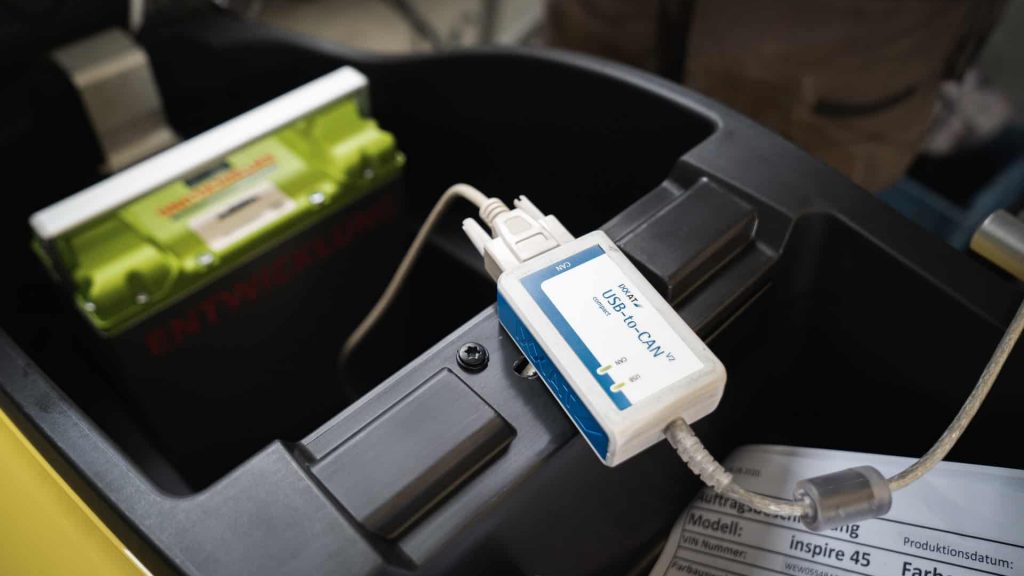Many motorists are aware of driving behavior and habits that can result in incompetent and vulnerable driving.
However, it is often the case that, although aware, they inadvertently drive their vehicles in an inefficient and unadvisable manner.
Therefore, the idea of implementing a system to capture, measure, and evaluate incompetent, wasteful, and unsafe driving activities with the technical details for real-time supervisory evaluation of performance, diagnostics (through so-called Diagnostics Trouble Codes or DTCs), fuel consumption, range, and emissions appears to make sense.
Such a system, to avoid additional phone connections, can be based on mobile applications, running on a smartphone, coupled with an OBD-II (On-Board Diagnostics 2) compatible reader.
On-Board Diagnostics (OBD for short), in the field of transportation, refers to a vehicle’s ability to self-diagnose and report errors and/or faults.
The introduction of this type of device dates back to the early 1980s on-board computers in motor vehicles, contained in the first implemented ECUs.
Early versions simply turned on a warning light bulb in the event of a problem, but did not provide any additional information regarding the nature of the problem.
Modern implementations of OBD use a digital communication port to provide real-time information in addition to an indication of the nature of problems via standardized (DTC) “Diagnostic Trouble Codes” that enable rapid identification and resolution of vehicle malfunctions.
Subsequent evolution occurred in the 1990s when OBD-II was introduced in the US.
Prior to self-diagnostics, it was the mechanics who had to diagnose faults, whereas now it is the on-board ECU itself that self-checks and verifies the condition of the vehicle.
OBD systems provide the vehicle owner or a mechanic with access to information on the “health” of the vehicle’s various subsystems: however, the standard regulations (in Europe and the United States) refer only to “emission relevant” subsystems, i.e., those that, if broken, can lead to increased emissions, such as catalytic converter, lambda sensor, etc., while other systems (e.g., airbags, air conditioning, etc.) have non-standard self-diagnosis, defined at will by each automaker.
OBD-II allows complete control over engine parameters and monitor other parts of a motor vehicle such as the chassis and accessories; it also allows connection to the diagnostic system.
The OBD-II standard also defines some commands for output control, self-checking modes and KAM (Keep Alive Memory) memory reset.
The EOBD (European On Board Diagnostics) standard is the European equivalent of OBD-II and was introduced for gasoline engines in 2001 along with the Euro 3 emission level by Directive 98/69/EC.
It applies to all M1-category passenger cars (with no more than 8 seats and a gross vehicle weight of up to 2,500 kg) registered for the first time within EU member states as of January 1, 2001 for gasoline-engined cars and as of January 1, 2004 for diesel-engined cars.
For newly introduced models, the dates of application of the regulations were brought forward by one year: January 1, 2000 for gasoline-powered passenger cars and January 1, 2003 for diesel-powered passenger cars.
For passenger cars with a gross vehicle weight greater than 2,500 kg and light commercial vehicles, the implementation dates of the regulations started from January 1, 2002 for gasoline models, and January 1, 2007 for diesel models.
The technical implementation of EOBD is essentially the same as OBD-II, and the same SAE J1962 (Society of Automotive Engineers J1962) connection and signal protocols are used.
The OBD-II port is a standardized serial port for extracting data from vehicle sensors and subsystems to diagnose vehicle problems and performance.
The common standard is the 16-pin OBD II connector usually located under the dashboard near the steering column, and most ports have a cover to protect the connector pins.
Data rates, over multipin cable, vary with the interface standard used: lower rates of 10.4 and 41.6 kb/s are the most common while CAN versions support as much as 250 and 500 kb/s.
The network configuration is point-to-multipoint so it relies on a master data collection device and multiple nodes that monitor the vehicle’s sensors and subsystems.
Typical collection devices include handheld scanners, personal computers, data loggers, emission testing devices or vehicle telematics systems (wireless: Bluetooth or Wi-Fi).
Generally there are multiple protocols unique to the manufacturer although most devices use UART specific data formats and frame structures.
The most popular chips are Elm Electronics (ELM320, ELM322, ELM323, ELM325, ELM327, ELM328, ELM329 chips) and OBD Solutions (STN1110 chip).
The SmartCar solution is based on ELM327 chips.




13 thoughts on “On-Board diagnostics: the source of the data”
Comments are closed.